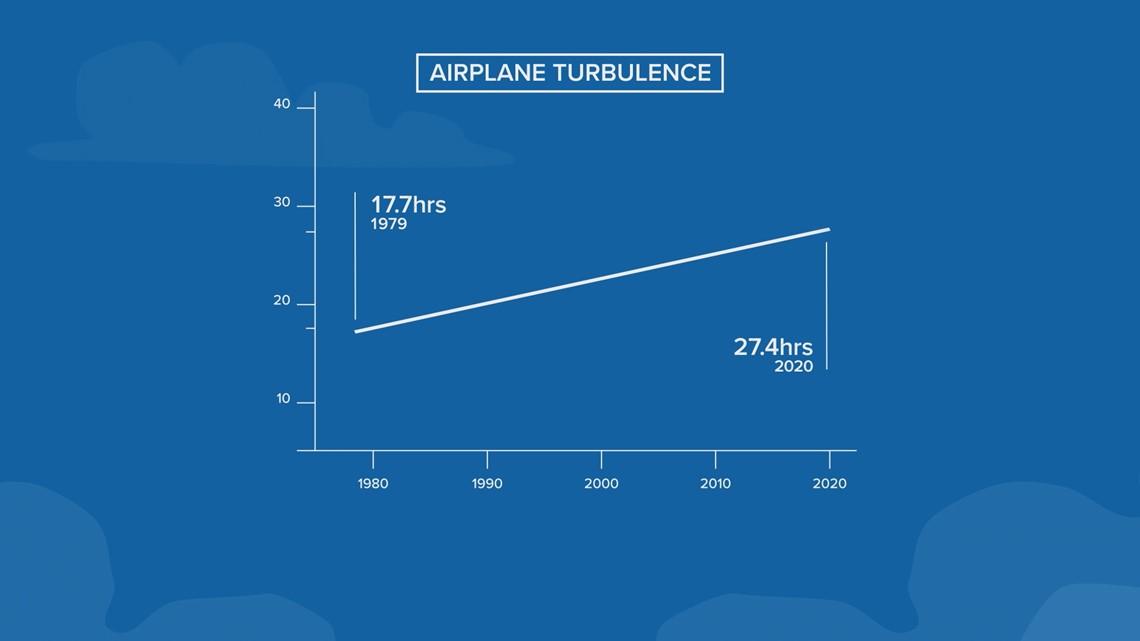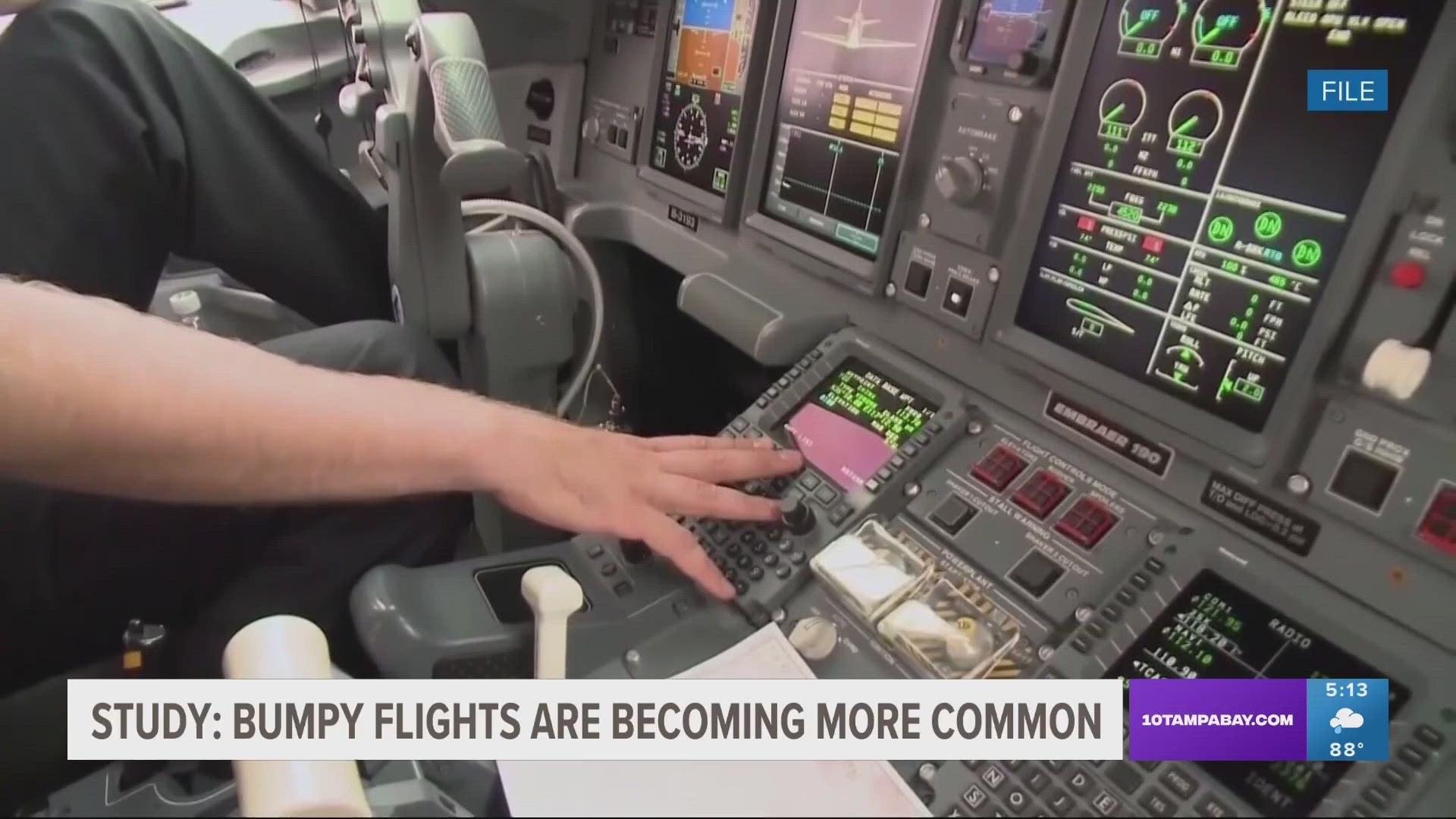ST. PETERSBURG, Fla. — Do plane rides seem bumpier to you? Have more of your flights needed to pause food and beverage services? Well, a new study shows it may not be a coincidence, and it’s likely caused by an increase in turbulence that’s harder for pilots to identify.
Researchers think it’s going to get worse because of climate change.
We’ve all seen the cell phone videos of turbulent flights caught on camera, causing panic, and in some cases, injuries. Last year, 36 people were treated after a hazardous flight from Phoenix to Hawaii.
“Luckily, severe turbulence is something that occurs pretty rarely and pilots are able to avoid it for the most part because most of that severe turbulence is generally associated with thunderstorms,” 10 Tampa Bay Aviation Expert and experienced pilot Mark Weinkrantz said.
But “clear-air turbulence” can happen without clouds, visual cues and without being detected by the plane’s instruments.
“Detecting it has gotten better over the years, but clear air turbulence remains a challenge to assess in advance and avoid as a pilot,” Weinkrantz added.
Weinkrantz says airlines give pilots reports of predictive areas where clear-air turbulence may develop, but it's often on the pilots to report if they experience it, and the level of which -- light, moderate, or severe -- is subjective.
“Severe turbulence requires not only a report but maintenance inspection of the aircraft after the airplane arrives. At that point, we're talking about the equivalent of the pilot sitting in a paint shaker, where you can't even read the instruments because the airplanes moving so quickly up and down that you can't focus on what's going ahead,” Weinkrantz explained.
Using satellite data calculations, a new study from the University of Reading and the American Geophysical Union found the presence of severe, clear air turbulence has increased by 55% between 1979 and 2020, largely over the North Atlantic.


“Turbulence makes flights bumpy and can occasionally be dangerous,” Mark Prosser, a University of Reading meteorologist who led the study, said. "Every additional minute spent traveling through turbulence increases wear-and-tear on the aircraft, as well as the risk of injuries to passengers and flight attendants.”
Researchers also say wind shear, which sudden change in wind direction or speed, in the jet stream has increased by 15% over the same period, and they believe climate change is the driving cause.
“Following a decade of research showing that climate change will increase clear-air turbulence in the future, we now have evidence suggesting that the increase has already begun,” Paul Williams, an atmospheric scientist at the University of Reading who helped conduct the study, said.
“More hot weather, more storms, more unstable airmass is passing around the country. But there are also more reports because there's so much more air travel,” Weinkrantz noted.
A bill now being looked at in Congress aims to limit gaps in recording turbulence data, and provide funding for the FAA to study the impacts of climate change, as well as better forecast to try and avoid as many bumpy rides as possible.
Congresswoman Haley Stevens (D-Michigan) who introduced the Severe Turbulence Research and Development Act says there were 19 cases of turbulence in the U.S. that required hospitalizations last year.
"These incidents are deeply concerning, and consumers deserve to have safe flying experiences. Scientific evidence shows that climate change has already begun to increase turbulence. As climate change's effects become more severe, further research is desperately needed," Stevens wrote in a press release.
It's estimated that turbulence-related issues cause the airline industry more than $150 million a year.

